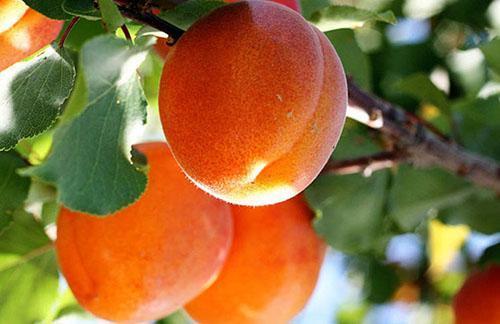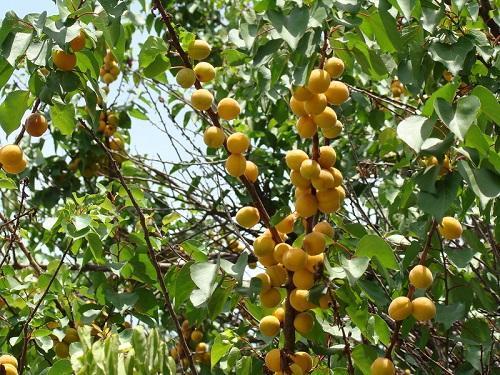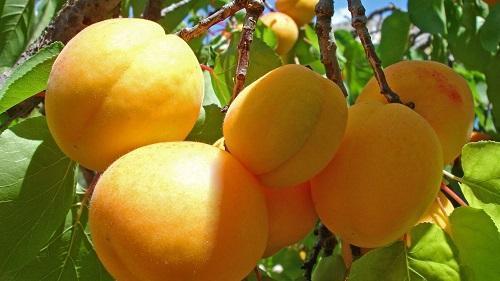What is the difference between a perch and an apricot?
 When buying young apricot seedlings, many novice gardeners are often faced with the fact that instead of a varietal tree, they are offered its wild relative - a zherdel. In general, this is not the worst option, because the fruits of the wild are very fragrant, moreover, in terms of yield, they are several times higher than cultivated apricots. However, there are still significant differences between them that are worth paying attention to. Distinguish the perch from apricot can:
When buying young apricot seedlings, many novice gardeners are often faced with the fact that instead of a varietal tree, they are offered its wild relative - a zherdel. In general, this is not the worst option, because the fruits of the wild are very fragrant, moreover, in terms of yield, they are several times higher than cultivated apricots. However, there are still significant differences between them that are worth paying attention to. Distinguish the perch from apricot can:
- in appearance and taste of the fruit;
- according to the characteristics of cultivation.
Comparative characteristics of fruits

The main difference between a perch and an apricot is that their fruits differ in appearance and taste. You need to pay attention to:
- The size... Apricots are large in size, some varieties can exceed 150 g, while the wild game is many times smaller and the fruit grows to a maximum of 35 g.
- Taste... Varietal fruits are very juicy and sweet, while wild fruits are slightly bitter and contain less juice and sugar.
- Pulp... Real apricot separates well from the stone, has a dense pulp without fibrous threads. And it is quite difficult to tear off the veneer with its fibrous pulp from the bone.
- Bone... The perch bone is very large, but not edible, since it contains a lot of acid and is very bitter from this. In addition, it has thick walls and is difficult to break. The core of apricot pits is sweet and easier to extract.
Gerdela reproduces by seed. Its seeds are also good for getting rootstock for apricot.
Growing features

Despite the outward similarity of trees, they have different requirements for growing conditions. Apricot is quite capricious, it requires warmth, sun, regular watering and light soil. He does not like drafts and stagnant moisture, is sensitive to diseases and often dries up for no reason.
Zherdela is not so spoiled by nature, she is able to grow even on poor and rocky soil. Due to the developed root system, the wild game tolerates dry hot summers well. It is more resistant to low winter temperatures and diseases... In addition, in the process of growth, it does not require regular pruning and feeding, like varietal apricot.
However, despite significant differences, both species are prone to spring frosts and grow poorly on clay soil.